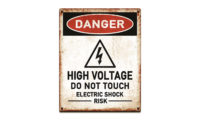The fine represents the amount that OSHA can levy against the company for lapses in workplace safety, Buffalo-area director Arthur J. Dube said. The company was also required to fix the hazardous conditions that inspectors found.
The employer may appeal the fines and dispute the agency's finding of fault.
The incident stemmed from a cave-in that killed Charles M. Lee, Jr., who was replacing a sewer line at a home in Hamburg. The employee was working in a trench 7-1/2 feet deep when the bank collapsed on him, OSHA's inspection records state.
The agency found that the trench lacked cave-in protections, which are required in trenches deeper than five feet, and other workplace safety violations.
According to OSHA, the agency actually cited Mark Patton, a Buffalo plumbing contractor doing business as Patton Plumbing. The citations were for six alleged serious safety violations.
Inspectors found no willful violations of safety rules at Patton Plumbing's work site, Dube said. One $7,000 penalty for lacking cave-in protections would have carried $70,000 in fines if the violation was considered deliberate, he said.
Penalties aren't linked to the severity of injuries in an accident, or whether a safety lapse results in a fatality, Dube said.
“There's no price for a human life — it (penalties) are on a case-by-case basis,†he said.
“Had proper safety procedures been followed, this fatal accident could have been prevented,†Dube added.
In addition to citing a lack of trench cave-in protections, OSHA also determined that:
- employees had not been trained to recognize trenching hazards;
- ladders of inadequate length were used to enter and exit the trenches;
- employees did not wear hardhats while working in the trenches;
- no tests were conducted to classify the type of soil to determine an appropriate method of collapse protection; and
- no inspections were conducted by a competent person with the knowledge and authority to identify and correct such hazards.

